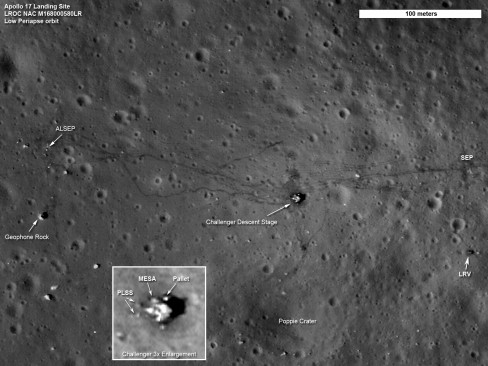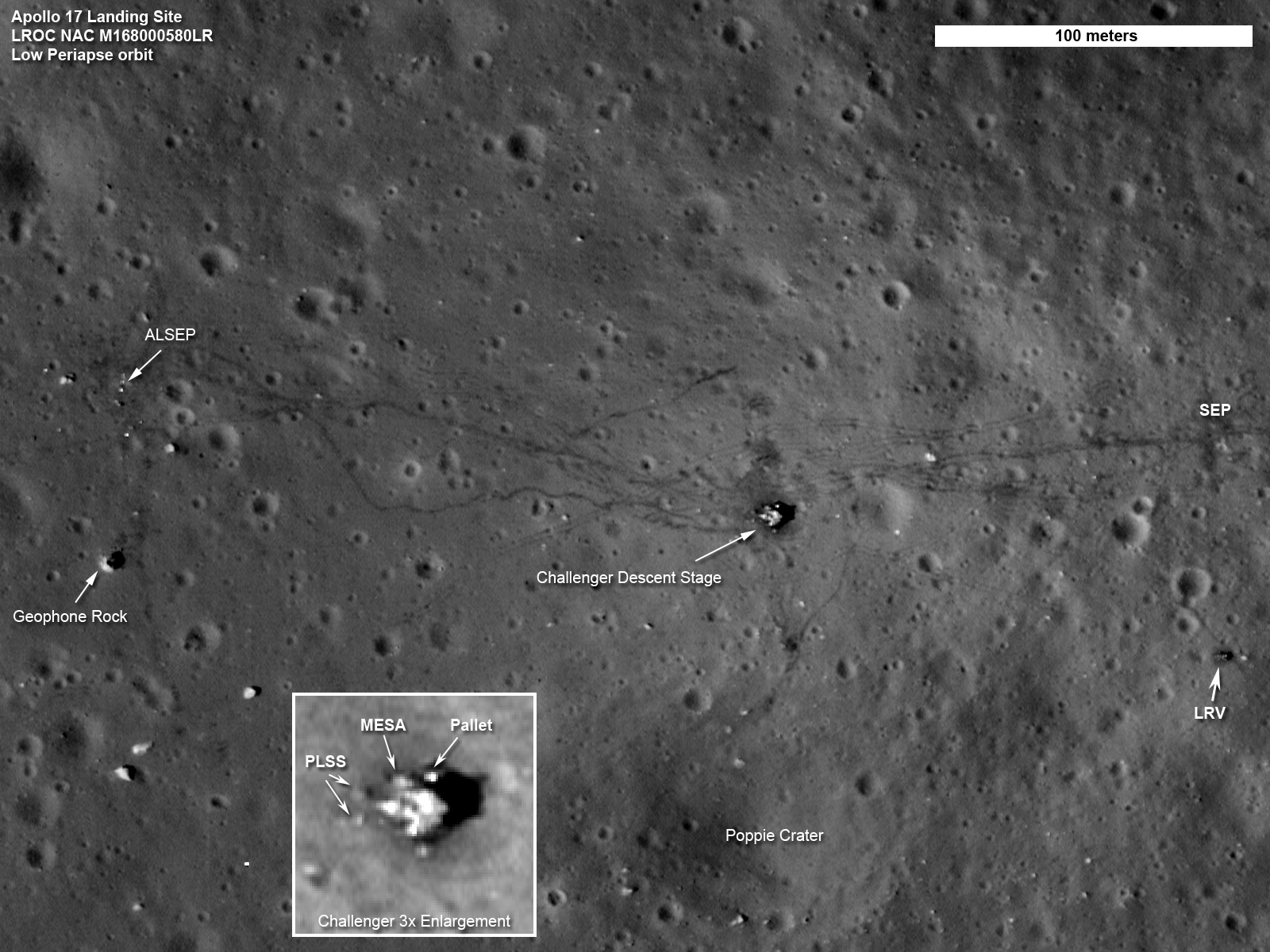NASA today released some of the most detailed images of the Apollo Moon landing sites ever recorded. The HD images show some of the items left on the surface by Apollo astronauts some 40 years ago.

Credit: Low orbit image of the Apollo 17 landing site. Image is 400 m wide. (NASA/GSFC/Arizona State University)
Click here to view larger image. Or click here to see NASA’s HD image.
The images are so detailed that they show boot tracks left behind by Apollo’s mission astronauts across the lunar surface. As well as the boot tracks the images show the tracks left by the LRV Lunar Buggy and the remains of scientific experiments. The Lunar Buggy itself can be seen parked near Apollo 17’s landing site (According to the images the Buggy’s drivers, Eugene Cernan and Harrison Schmitt, parked the vehicle with its wheels pointing to the left).

NAC Enlargement of LRV, surface image with LRV in final parking spot, and LRV schematic (NASA/GSFC/Arizona State University)
NASA took the images using their Lunar Reconnaissance Orbiter (LRO) which has been orbiting the Moon for two years. The LRO normally orbits about 50km above the Moon’s surface but NASA couldn’t resist taking the craft a little closer to the surface, within 21km to be precise, to take a closer look at the Apollo 12, 14, and 17 landing sites.
“Among other targets, we have examined three Apollo landing sites at even higher resolution and better determined details of the placement of the instruments on the surface, and more accurately place sample sites. Additionally, we can better distinguish debris (insulation blankets) that was scattered across the area during the liftoff of the upper stage of the Lunar Module” NASA said.
Taking the images was a challenging process for The LRO’s Lunar Reconnaissance Orbiter Camera (LROC) which had to balance the shutter speed, sunlight, and surface distance to take such crisp photographs.
In spite of spending 40 years on the Moon’s surface the scientific equipment, the buggy, and even the astronaut’s footprints are still preserved on the lunar soil. Without an atmosphere it could take up to 100 billion years before the every trace that man visited the Moon erodes away.
The Lunar Reconnaissance Orbiter is NASA’s high definition Moon mapping satellite, which, among other objectives, has been designed to identify possible future lunar landing sites for manned missions to the surface.
NASA will be releasing more across the week.












